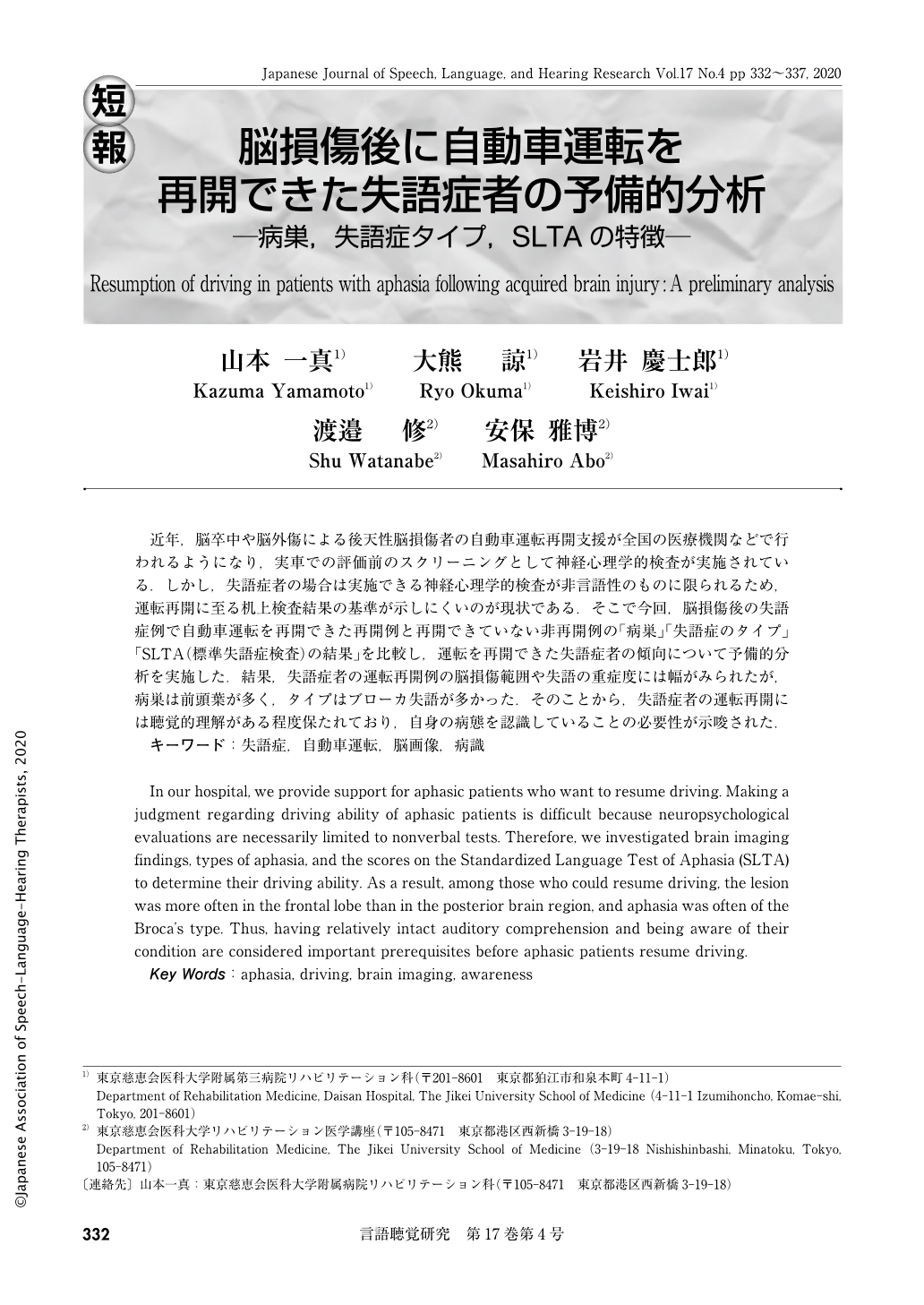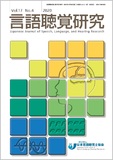Japanese
English
- 有料閲覧
- Abstract 文献概要
- 1ページ目 Look Inside
- 参考文献 Reference
近年,脳卒中や脳外傷による後天性脳損傷者の自動車運転再開支援が全国の医療機関などで行われるようになり,実車での評価前のスクリーニングとして神経心理学的検査が実施されている.しかし,失語症者の場合は実施できる神経心理学的検査が非言語性のものに限られるため,運転再開に至る机上検査結果の基準が示しにくいのが現状である.そこで今回,脳損傷後の失語症例で自動車運転を再開できた再開例と再開できていない非再開例の「病巣」「失語症のタイプ」「SLTA(標準失語症検査)の結果」を比較し,運転を再開できた失語症者の傾向について予備的分析を実施した.結果,失語症者の運転再開例の脳損傷範囲や失語の重症度には幅がみられたが,病巣は前頭葉が多く,タイプはブローカ失語が多かった.そのことから,失語症者の運転再開には聴覚的理解がある程度保たれており,自身の病態を認識していることの必要性が示唆された.
In our hospital, we provide support for aphasic patients who want to resume driving. Making a judgment regarding driving ability of aphasic patients is difficult because neuropsychological evaluations are necessarily limited to nonverbal tests. Therefore, we investigated brain imaging findings, types of aphasia, and the scores on the Standardized Language Test of Aphasia (SLTA) to determine their driving ability. As a result, among those who could resume driving, the lesion was more often in the frontal lobe than in the posterior brain region, and aphasia was often of the Broca's type. Thus, having relatively intact auditory comprehension and being aware of their condition are considered important prerequisites before aphasic patients resume driving.

Copyright © 2020, Japanese Association of Speech-Language-Hearing Therapists. All rights reserved.


